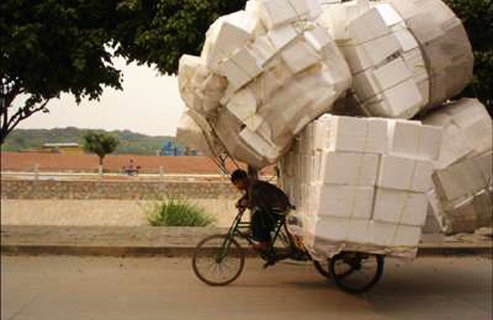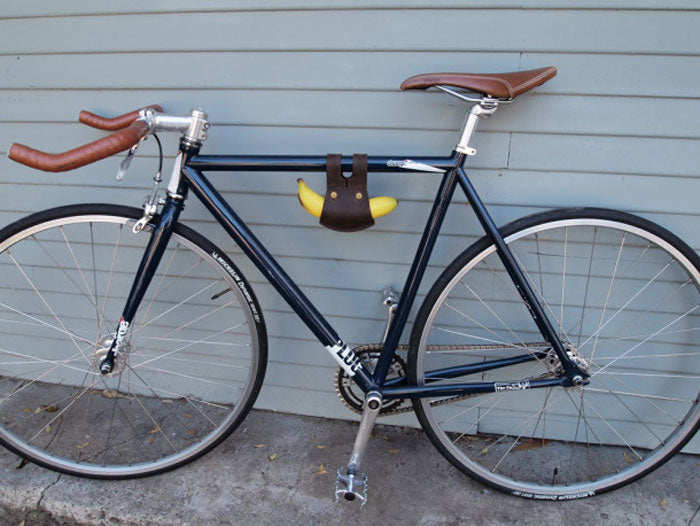For any bike:
- Helmet. Get something that fits right with good airflow. Studies have shown that all price points provide about the same protection. Spending more gets you lightness and comfort.
- Multi-tool. This will be good enough for most small maintenance jobs. If you find yourself riding a lot you may want full sized tools someday.
- Hand pump for bike. I like Lezyne's for the flexible hose they use, it helps prevent valve stem damage. Don't be fooled in co2 inflators. They're for racers and you'll be kicking yourself when you run out on the road.
- Floor pump for garage. This will do in 10 pumps what it takes a hand pump 100.
- Spare tubes
- Tire levers
- Park glueless patches for patching on the go. These will get you on your way without having to use your spare tube, but are usually only good until the next flat as deflating the tube compromises them.
- Vulcanizing patches for patching at home. I have at least 5 of these on each tube right now. Grab a huge sheet of them from eBay and a bottle of weld wood contact cement and you'll be good on patches for years.
- Water bottle and cage. The hand pump will come with a bracket that fit under the cage
- Saddle pack that fits your tube, glueless patches and multi tool.
- Chain lube appropriate for your riding conditions. Do you ride dirt roads? Wet roads? Your local shop can recommend an appropriate lube for your usage.
That's pretty much the essentials, now depending on what you do with your bike you may want:
- A couple jerseys
- Quality padded shorts. Cheap ones aren't worth it.
- A good lock. A u-lock or a hardened square link chain from a reputable manufacturer such as abus or kryptonite. Think of this a deterrent. No lock will stop a determined professional with an angle grinder. Cable locks are useless.
- Front and rear lights for riding at night. Don't cheap out. Your front light should be 300+ lumens.
- Fenders. Full coverage, for riding in the rain and on wet roads.
- A bell for riding on multi use pathways
- A rear rack and bags for carrying big things
- A front rack with a platform for carrying medium sized things
- A handlebar bag for for quick trips
Tip: your local REI probably offers free or low cost bike maintenance workshops.
Lots of great advice from many people and Orangehairfella. I Agree with most of it but it depends on your riding, commuting, shopping etc. So, here are some more thoughts to confuse you:
- I prefer to use tubes vs. patches. One tube at a time will likely get you back home. So, I would forgo the patches. Obviously, learn how to change a flat. Also, learn if your town buses offer bike carriers. I carry the right change to take the bus home if I am riding near a bus route. I would rather change my tire at home. And, in CT AAA offers bicycle support. They will drive you 10 miles if your bike has a mechanical problem.
- I virtually never wear bike jerseys. I do wear a fairly inexpensive fast dry shirt.
- I only wear padded shorts for rides over 15 miles. For my local commutes, I wear fast dry underwear, usually with pants from Zoic. I have not experienced any problems.
- I have a U-Lock but rarely take it or use it. However, I will typically park my bike where I can watch it and/or use an easy to carry 'deterrent' lock that is light to carry. Having said that, I do not leave it for hours out-of-site. I have never had a bike stolen.
- I would not purchase fenders until you know you will ride in the rain/snow. If you find yourself needing to commute in inclement weather, I would definitely get them.
- Again, depending on your bike use, a rear rack and/or handlebar bag are great. I use both of mine regularly on my town commuter bike. I have a front rack on my touring bike but not my town commuter. I think most people start with a handlebar bag and learn if a rear rack will be required. If you start shopping or needing to carry stuff, you will want one. If you elect to buy bags, I would suggest Ortliebs. They are expensive and may be the last bags you buy. Make sure they will fit your bike and rack. (When you buy a rack/bag, you will need to make sure your heels clear the bag. Your bike likely has a frame length that will be a bit difficult. So, shop with a knowledgeable person).
- Eventually, perhaps 1,000 miles or so you will need new tires. I am partial to Schwalbe Marathon and Continental Gator Skin for my commutting/touring bikes. You will need to check if they offer sizes that fit your bike.
- I love my Garmin that keeps stats ( MPH, distance, average speed, and a lot more) but also expensive. There are cheaper alternatives that may meet or exceed your needs, just not as sexy or as much info.
- Lots of Youtube advice that is very good for bike maintenance. Your drive chain is probably the most frequent. Look for videos about chain maintenance and knowing when to change it since waiting too long will require a cassette change. And, per above, know how to change a flat.
- While all of this is important, perhaps the most important thing is to teach yourself how to be an urban rider. A bike is not a toy. Here are some good links that will provide advice for safe on-street riding. If all the stuff that has been shared, in my opinion this is the most important.
Boston Bikes - Urban Cycling 

